The last dive of the cruise took place on August 18. We decided to return to the area where the previous dive had found traces of hydrothermal activity. The site was found on the flank of a large, oblique peridotite hill, located on the north flank of the oblique axial transfer zone. The site was named MLF after the children of Olivier Fauvin, the Nautile pilot of dive #24, Marius and Louise.
We started early, as the Nautile team wished to return not too late in order to start preparing the submersible to the return. The submersible was in the water at 07h55 UT and we reached the sea floor at 9h45 at a depth of 3755 m. We immediately observed traces of a reddish brown material on the sedimented slope facing the submersible. After barely ten minutes, we started to observe large blocks of what was later confirmed to be pyrite, sign that we were near the area of an hydrothermal site.
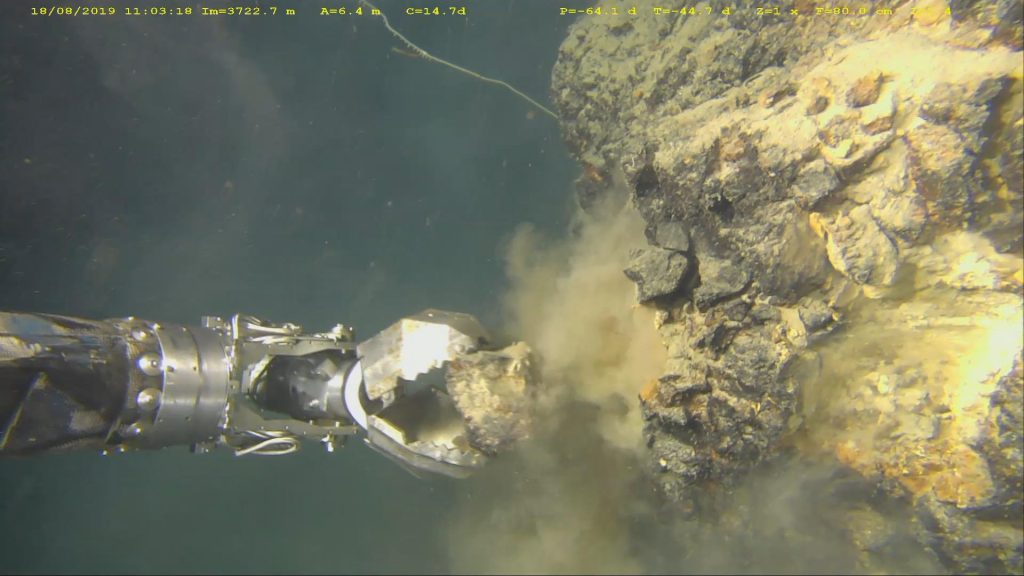
Sampling of a block at the beginning of the dive. © SMARTIES cruise 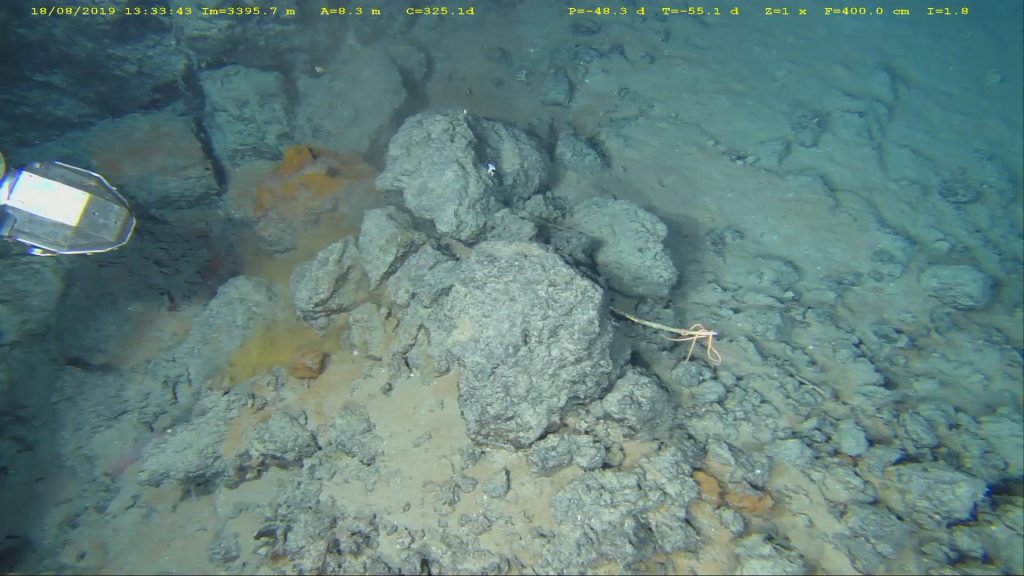
Blocks with traces of hydrothermal activity. © SMARTIES cruise 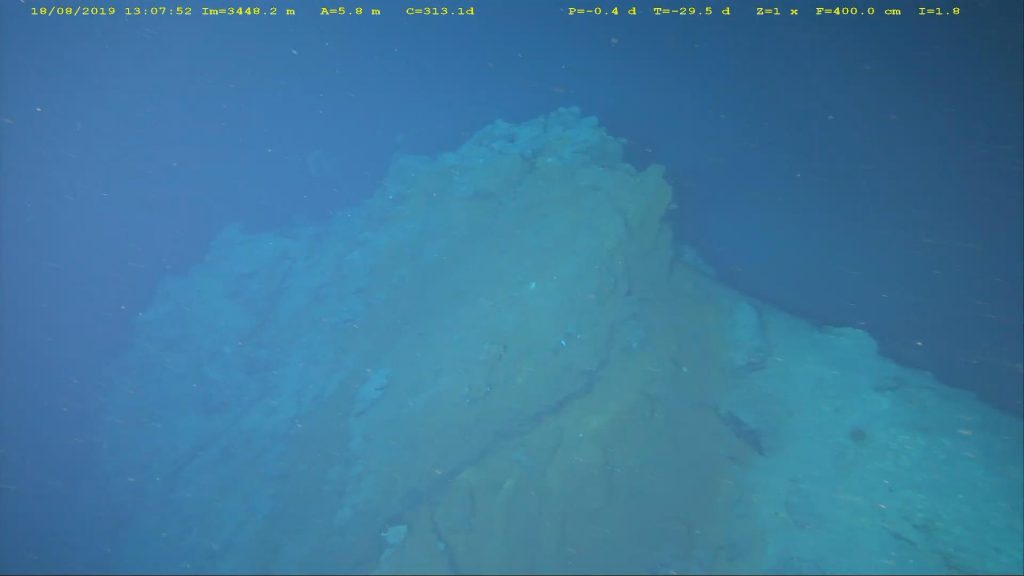
Summit of an ancient hydrothermal mound. © SMARTIES cruise 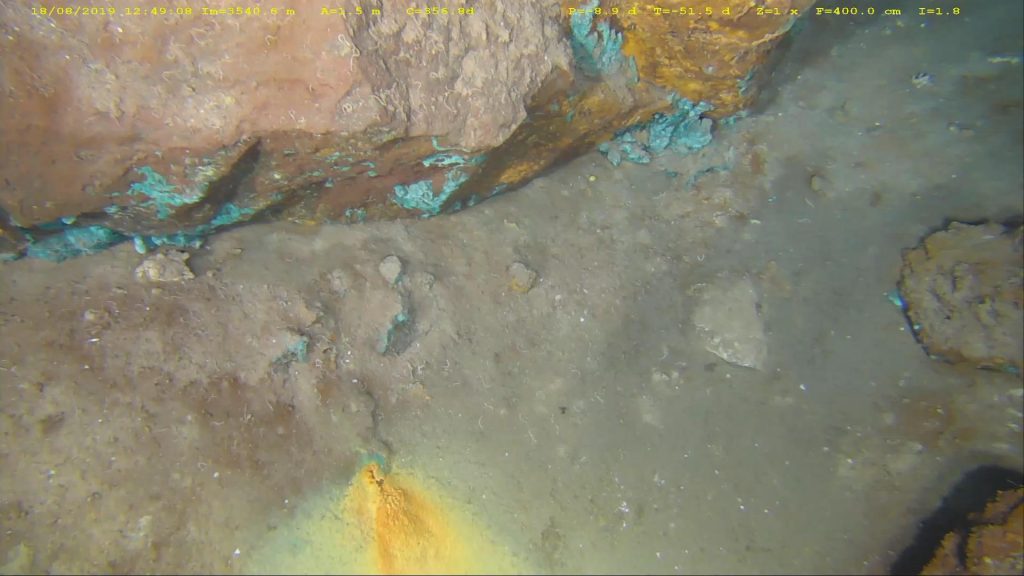
A small vent (yellow orange traces) and traces of copper on a boulder. © SMARTIES cruise
The steep scarp we were exploring was coated with thick white sediment, deeply cut by erosional gullies. At its base, we observed many large boulders, some blocks of pyrite and peridotite with traces of hydrothermal sediments (reddish brown powder). Upwards, the blocks become generally larger, with several large pyrite blocks and also angular blocks that may correspond to peridotite (sampled by dredge in former cruise and in dive #24). Hydrothermal colors become more present with bright orange patches and traces of copper sulphide on the bases of boulders.
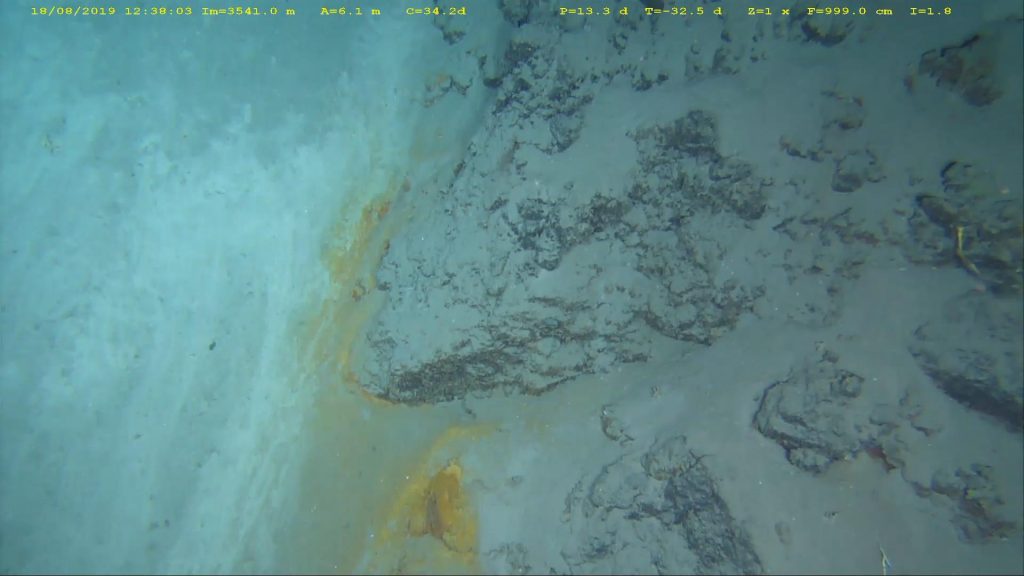
Contact between the sedimentary eroded gully with hydrothermal activity and the undisturbed white sediments. © SMARTIES cruise 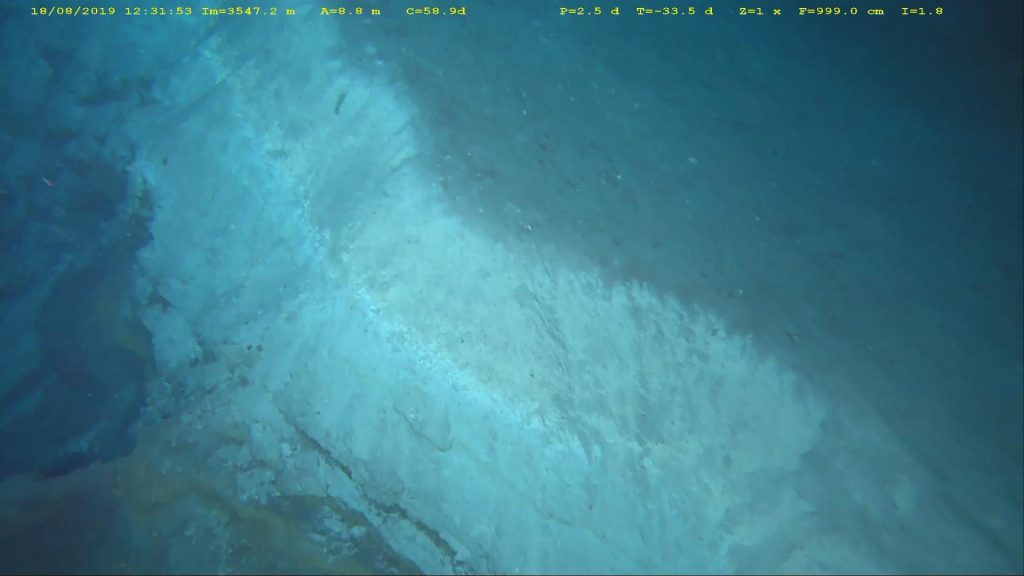
Upper limit of a gully showing the undisturned sedimentary layers on the top. © SMARTIES cruise 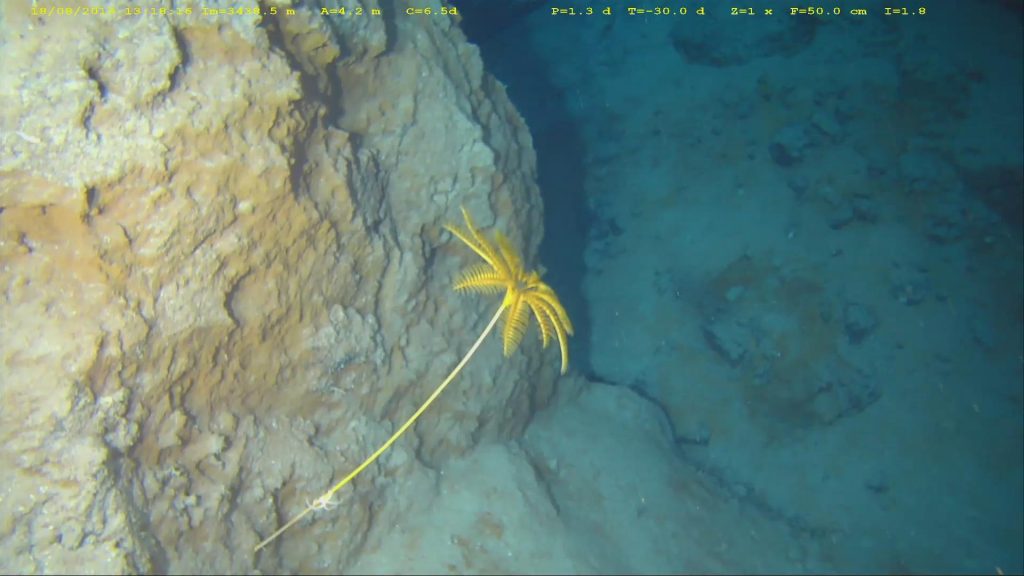
Crinoid on a boulder. © SMARTIES cruise
The sediment coverage was variable, with some areas displaying thick, undisturbed layers than others. The present day hydrothermal activity is concentrated on the gullies, and more present close to boulders. Small vents release what is probably low temperature fluids, as no shimmering waters were observed, and large bright orange mats are widespread. One relatively large bacterial mat of bright white color was observed. Still upwards, we find larger blocks in a chaos of boulders and finish in a narrow top of what looks like an old, inactive hydrothermal mound, formed of reddish-brown coated pyrite.
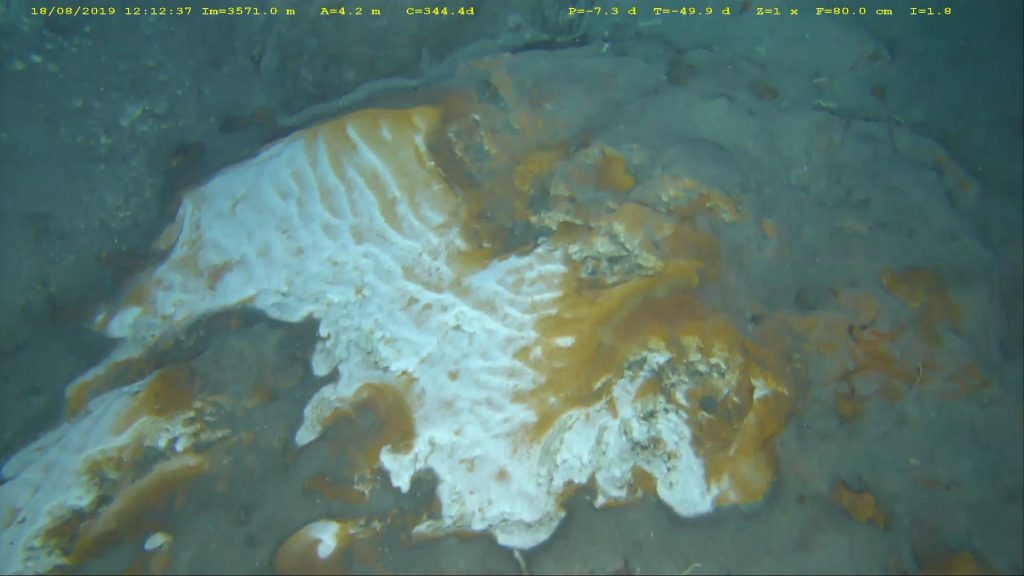
White bacterial mat. © SMARTIES cruise 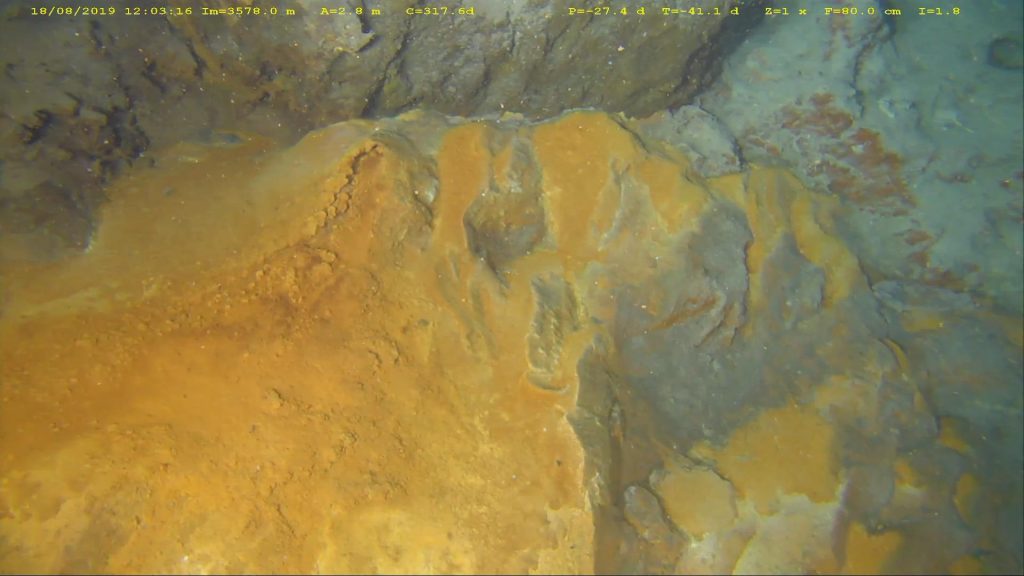
Small elongated vent with traces of bacteria (?)/ © SMARTIES cruise 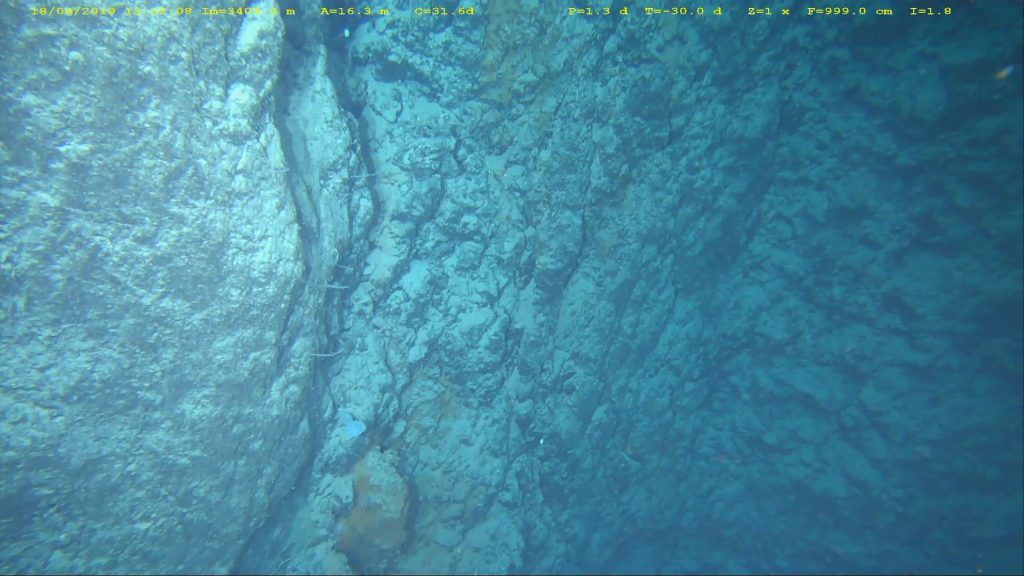
A steep fault plane. © SMARTIES cruise 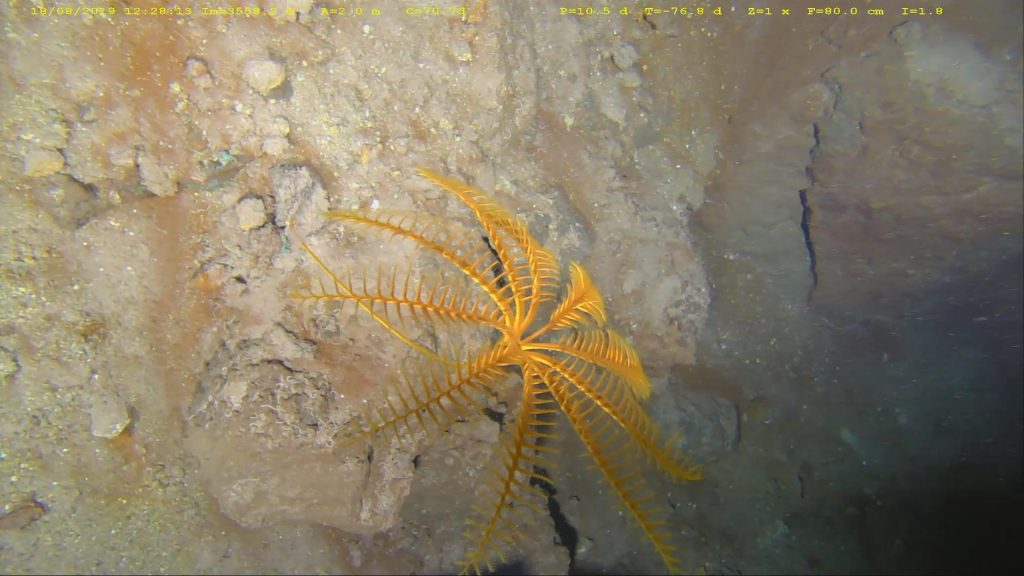
Beautiful crinoid on a shining boulder with copper traces. © SMARTIES cruise
Further uphill, we reach a steep fault scarp, roughly N120, devoid of sediments, about 50 m high, already described during the previous dive. We then proceed across a sedimented surface and reach an area of medium to small boulders, in what looks like an avalanche path, where clam shells were found. No trace of activity was seen and we could not locate the shell deposit again. We proceeded then to climb the second part of the scarp, heavily sedimented and reached the top, also sedimented. We left the sea floor at a depth of 3000 m, at 14h43 UT.
By M. Maia